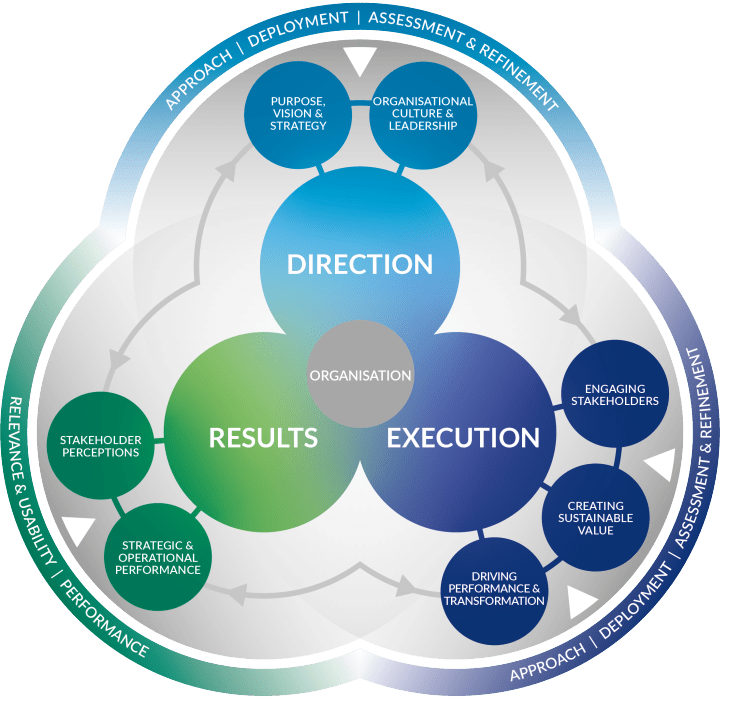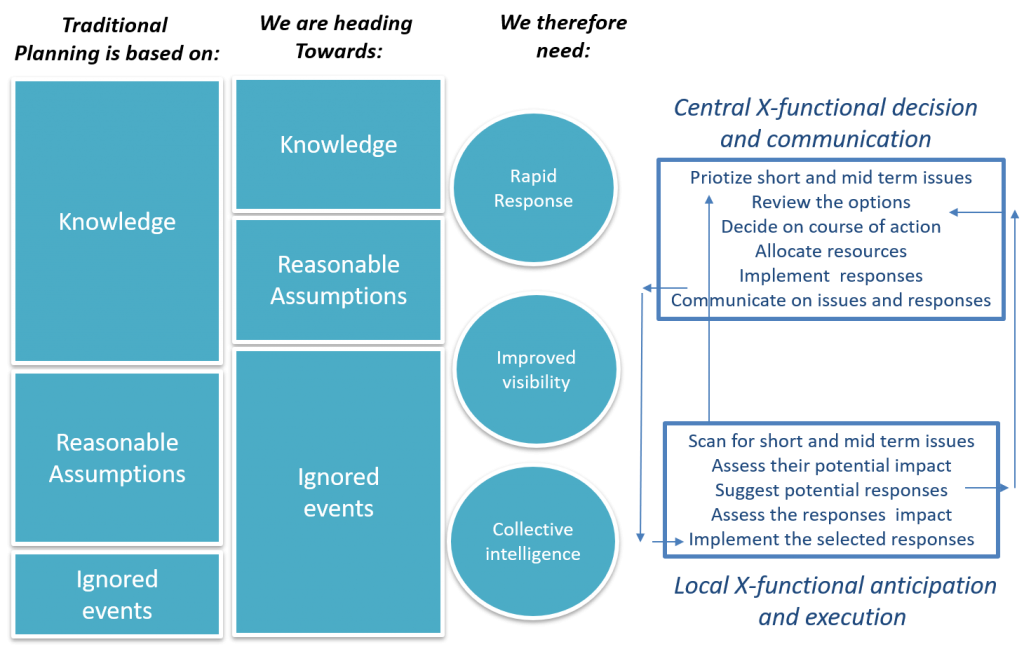Today Open architectures, Open Hardware and Open Source Software are making progress across diverse industries where they could disrupt supply chains and bring to life open supply chains. This will not happen overnight, but it is worth understanding such developments. The present article aims at describing what open supply chains are about. It builds on the Open RAN example in the telecom sector.
Whether you look at a phone, a copier, a microprocessor, a data center or a telecom equipment, you have a box in front of you. That box is composed of multiple blocks of hardware and software (to keep things simple). Altogether this form an architecture. The architecture defines interfaces that connect the blocks. To use the box, you might also need additional services, software and complementary tools… so you can design, implement, use and maintain the box.
Some companies who have developed proprietary boxes have been able to create a dominant market position. They sell the box, the complementary tools together with the additional services as a “turnkey” solution. Today, as such market have globalised, very few actors remain, and you need to choose either one or the other.
A first step that challenge such a dominant market position is to establish an open architecture. As the interfaces become standard, this suddenly open ups the possibility to replace the provider of a proprietary box by multiple suppliers of off-the-shelf hardware and software. Any software can work on any hardware and multiple pieces of hardware can be assembled together. Anyone who had to pay a huge amount of money for a cable will understand this easily.
The next steps could include creating blocks available as open hardware or as open source software. With open hardware, the hardware block can be manufactured by any company capable of delivering according to the needs of the customer (volume, quality, reliability…). With open source software, the code is available and can be supported by any service provider.
Doing this leads to the dis-aggregation of the supply chain. It creates an open supply chain where there is a high level of flexibility for supplier’s selection.
Achieving this is nevertheless very challenging as this requires creating and imposing on the market the interfaces and the design of the blocks. This also requires suppliers with adequate manufacturing capability and complementary software, services and tools providers. They might not be available on the market. It can also require operating the supply chain differently as the integration capabilities of proprietary box providers need to be replaced.
Over the past years, this has nevertheless been initiated in some industries. This include data centers, telecom equipment’s and microprocessors. The idea behind open source software and open data dominate the tech industry and they are now moving towards neighboring industries.
To do this, large scale collaborations have been created. They are led by foundation with specific structured governance mechanism and intellectual property guidelines. Companies that want to be part of such open supply chains have joined these foundations as members. Some of these members contributed to the design of the interfaces, of the software or of the hardware; some can provide the complementary services, tools or manufacturing capabilities needed to contribute to deliver full value proposition. The word ecosystem is used to describe such groups of organizations.
An example from the telecom sector can be used to illustrate this.
A Radio Area Networks (RAN) is one of the main building blocks of a Telecom infrastructure. With proprietary RANs provided by companies such as Nokia, Ericsson or Huawei, the software and hardware are coupled together.
Open RAN is a recent initiative under the umbrella of the Telecom Infra Project (TIP). With Open RAN the software and the open architecture allow to assemble common-off-the-shelf (COTS) hardware from diverse suppliers to build a network. This offers cost reduction opportunities; it avoids vendor lock in and allows to innovate faster by assembling the design capabilities of multiple companies.
Telecom operators such as Vodafone and Telefonica have worked with Open RAN suppliers. A few Request for Proposals have been completed and the scope of the project they initiate is increasing. This is clearly an attempt to challenge the dominance of Ericsson, Huawei and Nokia
Vodafone CEO, Nick Read, has publicly stated that the company was seeking to “actively expand” its supplier network for Open RAN. This creates an Open Supply chain for RAN.
If the benefits are obvious, this remain a challenging development. The Telecom Infra Project brings together hundreds of companies. To be successful such an ecosystem needs to adopt new ways of collaborating across companies that can challenge years of industry practice.
If you are interested in open supply chains, you can look at other project such as RISC-V for Microprocessors, Open Compute Project for Data centers. Project such as Apollo Auto for autonomous cars and Lora alliance for the Internet of things are slightly different but also of interest.
Open supply chains might become more common in the future. We therefore need to further study them.
Join the discussion! Share your views on my post on LinkedIn!
Hervé Legenvre, PhD
EIPM Value Creation Observatory Director
Share this:
- Click to print (Opens in new window)
- Click to share on Facebook (Opens in new window)
- Click to share on LinkedIn (Opens in new window)
- Click to share on Twitter (Opens in new window)
- Click to share on Google+ (Opens in new window)
- Click to share on Pinterest (Opens in new window)
- Click to share on Skype (Opens in new window)
- Click to share on WhatsApp (Opens in new window)





